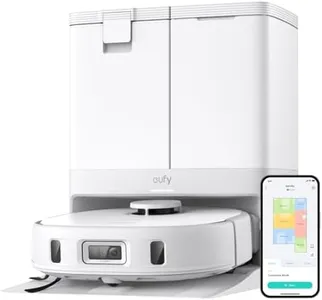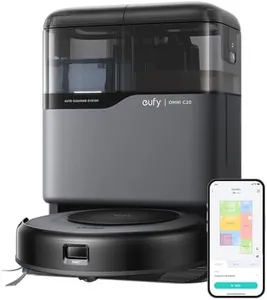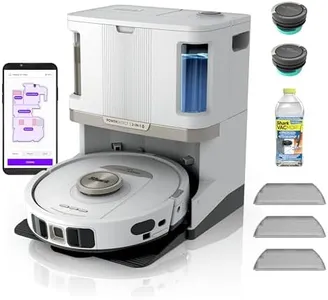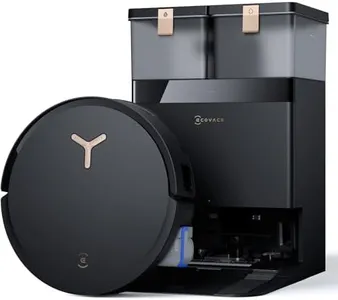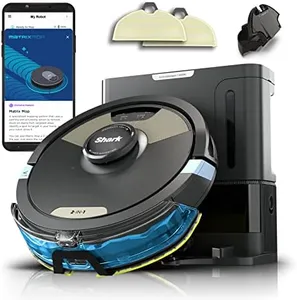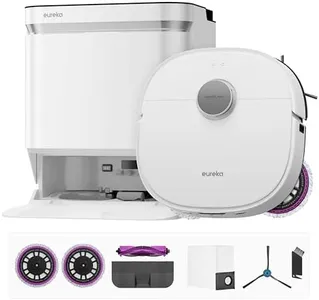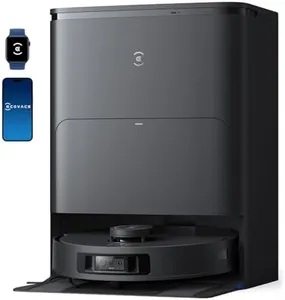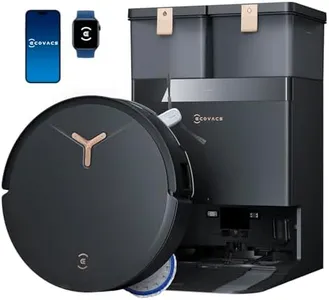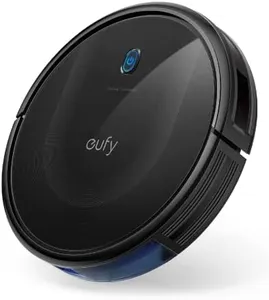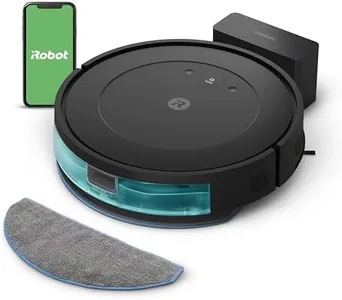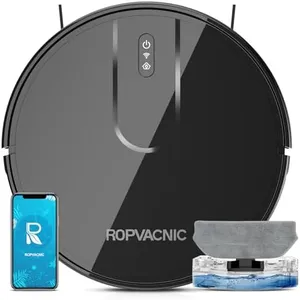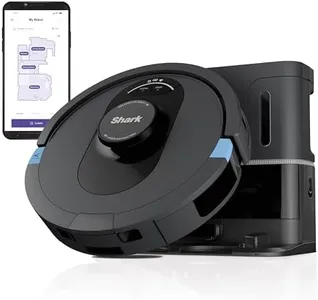10 Best Robot Vacuums 2025 in the United States
Our technology thoroughly searches through the online shopping world, reviewing hundreds of sites. We then process and analyze this information, updating in real-time to bring you the latest top-rated products. This way, you always get the best and most current options available.

Our Top Picks
Winner
eufy X10 Pro Omni Robot Vacuum and Mop Combo, 8,000 Pa Suction, Dual Mops with 12 mm Auto-Lift and Carpet Detection, AI Obstacle Avoidance, Auto Mop Washing, Auto Drying, Self-Emptying, White
Most important from
1808 reviews
The eufy X10 Pro Omni Robot Vacuum and Mop Combo is a robust cleaning device designed for hands-free, thorough cleaning. With an impressive 8,000 Pa suction power, it effectively removes hidden debris and pet hair from carpets, offering a deep clean in one pass. Its dual mop system, with 180 rotations per minute and significant downward pressure, ensures spotless floors and automatically lifts to avoid wetting carpets.
The AI obstacle avoidance feature is highly advanced, capable of identifying over 100 different objects, and the customizable AI.Map 3.0 allows for specific cleaning scenarios, such as No-Go Zones. The iPath Laser Navigation enhances cleaning efficiency by mapping out the most effective routes around your home. Smart features include compatibility with smartphones and smart home devices like Amazon Echo and Google Home, although it only supports 2.4GHz Wi-Fi, which might be a limitation for some users.
The all-in-one station simplifies maintenance by washing, drying the mop pads, and emptying the dustbin into a 2.5L dust bag that needs replacement every two months. With a battery life of 173 minutes, it can cover significant cleaning before needing a recharge. The device is relatively quiet, making it suitable for homes with different floor types. The eufy X10 Pro Omni is a great option for those looking for a powerful, smart, and efficient cleaning solution, but potential users should be aware of the Wi-Fi limitation and the need for regular maintenance of the dust bags.
Most important from
1808 reviews
eufy Robot Vacuum Omni C20, Robot Vacuum and Mop Combo, Self Emptying, Auto Mop Washing and Auto Drying for Hands-free Cleaning, 7000 Pa Powerful Suction, 3.35-Inch Ultra-Slim Body, All-in-One Station
Most important from
66853 reviews
The eufy Robot Vacuum Omni C20 is a versatile cleaning device that combines vacuuming and mopping, making it ideal for those looking for an all-in-one solution. One of its standout features is the powerful 7,000 Pa suction, which is excellent for picking up dirt, crumbs, pet hair, and debris. This makes it suitable for various floor types, including carpets and hard floors. However, suction performance may vary depending on dust levels and floor type.
The device also boasts a 3.35-inch ultra-slim body, allowing it to clean under furniture and in tight spaces effectively. It includes a self-emptying station and auto mop washing and drying, which significantly reduces maintenance effort. The 132 minutes of battery life is decent, ensuring it can cover a considerable area before needing a recharge. The dustbin capacity is 3.1 liters, which is ample for frequent cleanings without the need for constant emptying.
On the downside, the Omni C20 only supports 2.4GHz Wi-Fi, which may be a limitation for some users. It operates at a low noise level, making it less intrusive during use. Smart features include compatibility with Google Assistant, Amazon Alexa, and Siri, allowing voice control and integration into smart home systems. Users who prioritize hands-free cleaning, efficient suction power, and smart features will find this product particularly beneficial.
Most important from
66853 reviews
Shark Robot Vacuum & Mop Combo, PowerDetect NeverTouch Pro, Self-Emptying, Self-Refill with Self-Clean Pad Wash & Dry, 60-Day Debris Capacity, 30-Day Refill Tank, 5 PowerDetect Technologies, AV2800ZE
Most important from
4369 reviews
The Shark Robot Vacuum & Mop Combo, PowerDetect NeverTouch Pro, is an impressive addition to the robot vacuum category, particularly for those seeking convenience in cleaning. One of its standout features is its ability to self-empty and refill, allowing for hands-free maintenance for up to 60 days. This means less worry about constant upkeep, making it ideal for busy households. With five advanced cleaning technologies, it effectively tackles hidden dirt and stuck-on stains, ensuring a thorough clean across various floor types, including carpets and hard surfaces.
The navigation technology is another strong point. With a combination of 3D sensors and 360° LiDAR, the robot efficiently avoids obstacles and adapts to changes in the environment, minimizing interruptions during cleaning cycles. Smart features enable you to set schedules, target specific areas, and create no-go zones, offering a customizable experience for your cleaning needs.
The Shark Robot Vacuum & Mop Combo is a robust option for families or individuals looking for a hands-off cleaning solution, especially if they live in varied floor types and want smart features to enhance their cleaning routine.
Most important from
4369 reviews
Buying Guide for the Best Robot Vacuums
Choosing the right robot vacuum can make a significant difference in maintaining a clean home with minimal effort. When selecting a robot vacuum, it's important to consider various features and specifications to ensure it meets your specific needs. Here are some key specs to look out for and how to navigate them.FAQ
Most Popular Categories Right Now


